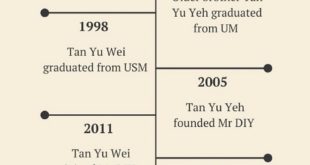Singapore has moved into the second phase of the circuit breaker but the first day of Phase 2 saw crowds and long lines at malls and other hotspots.
This begs the question: Could this cause another round of circuit-breaker in Singapore?
Crowd Prevention Isn’t Working Perfectly
After almost three months of being confined at home, Singapore citizens were understandably very eager to head out and regain a sense of normalcy.
With social distancing measures in place, commercial establishments had to limit the number of people in stores. However, long lines were still formed outside of mall and shop entrances.
Crowds also continued to form along the streets, on public transport, and outside shops.
These long queues made it very difficult to maintain safe distancing of at least 1 metre apart.
On June 19, the first day of Phase 2, members of the public flocked to Orchard Road and congregated at popular F&B outlets in Changi Village, Simpang Bedok, and Upper Thomson Road.
The same day, several fights also broke out in an explosive mixture of alcohol and overcrowding. Three men were arrested at a Bukit Batok coffee shop, and another two were arrested at Holland Village.
Restaurants Can’t Disperse Crowds
The formation of large crowds along the streets of Holland Village led to heavy penalties imposed by the Urban Redevelopment Authority (URA) on an adjacent restaurant, British India Curry Hut.
Its general manager Khader Basha claims that the store had only taken reservations that night, and complied with safety guidelines.
“The people who are standing on the street, who are not wearing a mask and smoking, we can’t go and control them,” he said.
Holland Village’s outdoor refreshment area has since been closed, drawing criticism from restaurant owners who complained that their business earnings had dropped by as much as 80%.
The Ministry of Manpower has made it clear that businesses should ensure a spacing of at least 1 metre apart for their customers as it is “reasonably practical” to prevent overcrowding.
But how would one define “reasonably practical”?
It’s clear to see that restaurants and other service-oriented businesses are not inherently equipped with the ability to manage crowds.

Your favorite bak chor mee auntie can’t make the entire food court up and leave. A business can serve 200 people, but it doesn’t have the legal authority to dictate their actions.
While businesses are responsible for implementing preventative distancing measures, punishing unruly customers is out of their jurisdiction.
Stores also cannot be held responsible for crowds outside their shops. The onus is on the businesses to manage crowds or risk losing profits, but this is a tough line to walk without crowd control equipment.
Another Outbreak, Lockdown May Happen If Crowds Persist
As of today (June 23), there are 6,411 active cases of coronavirus 116 new cases in foreign worker dormitories and three in the community.
The government has warned that more cases of Covid-19 will emerge as the economy reopens in Phase 2. This increases the likelihood of a super-spreader event, where one person infects a large number of people.
The increasing duration and proximity to others, enclosed spaces, and crowds will all compound the risk of another community outbreak.
Ms Sun Xueling, MP for Pasir-Ris Punggol, expressed concern about the large crowds at Waterway Point and urged the public to practice social distancing.
“Let’s not take one step forward and many steps back,” she said.
So long as Covid-19 exists, the likelihood of a reversion to the lockdown will be an ever-present possibility. The crowds are only the catalyst.
Featured Image Credit: Dhany Osman via Yahoo Singapore



